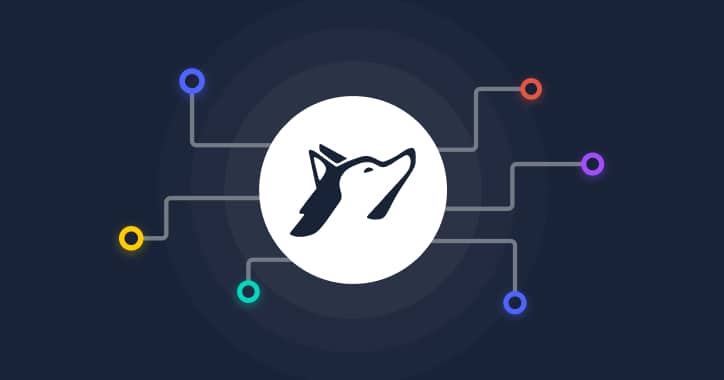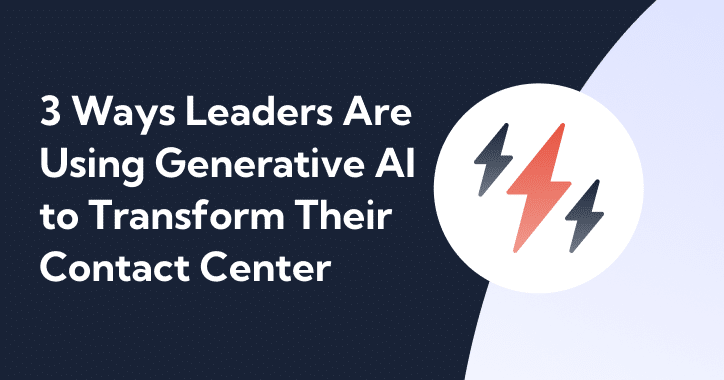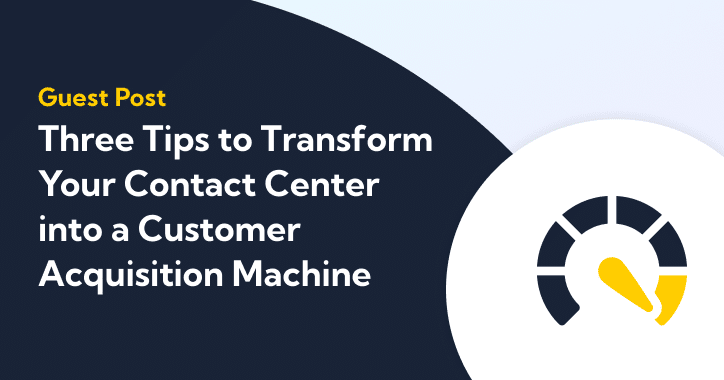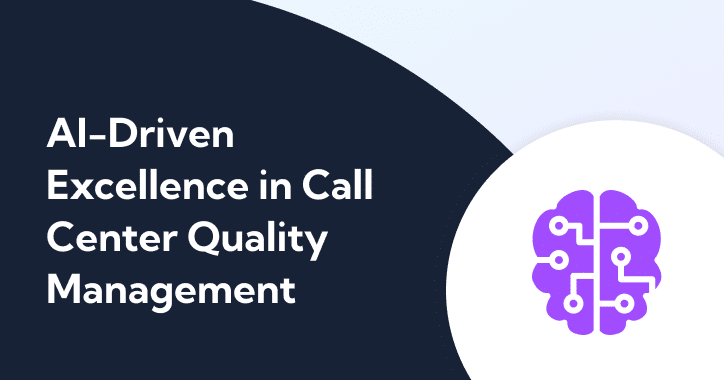Customer expectations regarding service level have evolved drastically in recent years, with 24/7 availability, minimal wait times, and fast resolutions becoming essential for customers to choose a brand. What was acceptable in the past can cause you major revenue losses today.
However, meeting these changing customer expectations can be very costly and impractical for most contact centers. It typically requires hiring more staff and investing more in training and development, both of which require significant capital investments.
Enter contact center AI, a new tech-based approach that can help you make customers happier and loyal to your brand, without the overheads. Leveraging Artificial Intelligence (AI) in your contact center can help you solve even the most challenging customer experience problems. With AI, you can automate routine tasks, empower your agents to serve customers more effectively and reduce risk.
In this guide, we’ll delve into the capabilities of different AI contact center applications and how you can utilize them to improve customer satisfaction and employee well-being.
Defining Contact Center AI?
Contact Center AI is the use of Artificial Intelligence (AI) and Machine Learning (ML) in contact centers to increase agent efficiency and boost customer satisfaction throughout all stages of the customer journey.
Some common use cases for AI in the contact center industry include routine task automation, real-time language translation, customer interaction analysis, real-time quality assurance, and agent assistance and coaching.
Contact center AI can enhance call center agent performance, provide a more personalized customer support experience, and make customers happier.

What Can Contact Center AI Do?
Contact center AI solutions are capable of simplifying a wide range of contact center operations and tasks. Here’s what a contact center AI tool can do:
Transcribe Interactions in Real-Time
Contact center AI solutions are capable of accurately transcribing live customer conversations. They also provide call summaries, as well as further steps the agent can take to enhance the support experience.
Additionally, with the integrated machine learning capabilities, the models built into AI solutions are continuously enhancing their results to ensure the best possible level of accuracy and relevance.
Anticipate Customer Needs
Figuring out what your customer needs and identifying intent before they even interact with your contact center is one of the areas where you can improve customer experience with AI.
For example, if an e-commerce store experiences extended downtime, and they decide to reach out to their hosting provider for support on a weekend when the company usually expects the highest sales volume, the AI judges the call to be urgent even before it’s answered.
The AI puts that company’s query at the top of the queue and routes it to the most suitable agent with an Automatic Call Distribution (ACD) system so that they can get support quickly.
Conversation Augmentation
As the company’s representative explains the issue to the human agent on the phone, an AI-enabled virtual agent is simultaneously listening to the call and pulling out key terms with Natural Language Processing (NLP) to quickly identify the possible causes of downtime and even propose solutions.
All of this happens before the customer fully explains the problem, which also contributes to a lower Average Handling Time (AHT).
Automation
In contact centers, some tasks don’t always require a human agent. Contact center AI can easily handle routine customer requests efficiently without involving a human agent.
For example, most contact center agents are required to complete after-call work once a customer conversation is complete. After-call work typically lasts anywhere from 15 seconds to 5 minutes.
Good after-call work is important, but it takes agents off the phone. Call centers can automate after-call work with contact center AI like Balto’s Real-Time Notetaker.
Real-World Contact Center Transformation With AI: The Junkluggers Example
The Junkluggers, an eco-friendly junk removal company, faced significant challenges in maintaining consistent messaging during customer calls, which was crucial for highlighting their unique selling points such as sustainable disposal practices. This inconsistency led to a drop in conversions from leads.
To address these challenges, The Junkluggers implemented Balto’s Real-Time Guidance technology. This AI-powered solution provided agents with dynamic prompts and AI-guided checklists, ensuring key points were communicated effectively during calls.
The implementation started with a pilot phase for agents with an early-adopter mindset, focusing initially on improving communication about single-item pricing.
Results from the pilot phase were impressive:
- Significant increase in lead conversions
- Decreased staffing needs due to improved efficiency
- Reduction in call duration by 6%, translating to substantial time savings
- Enhanced transparency in call quality and content
This transformation with Balto AI not only streamlined operations but also led to better customer engagement and higher revenue for The Junkluggers, marking a successful integration of AI in their contact center operations.
Check out the full case study here.
Benefits of Artificial Intelligence in the Contact Center
There are many perks of integrating AI into your contact center. These include:
1. Advanced Agent Routing
With AI-enabled tools like Auto Call Distributors (ACD) and Interactive Voice Response (IVR) systems, you can route customers to the best available agent by analyzing customer history, intent, and problems. This can drastically improve your First Contact Resolution (FCR) rate, resulting in a better customer experience.
With efficient routing, customers don’t have to talk to multiple agents to get a solution for their problems. Not to mention, agents can free up more of their time to handle relevant calls that match their qualifications and training.
2. Empower Your Agents and Make Customers Happier
AI takes care of mundane tasks, enabling agents to free up their time to handle complex interactions. By providing agents with loads of insightful data right under their fingertips, they’ll be able to better assist your customers and improve their experience.
AI can also encourage your agents to self-improve by guiding them on how to overcome their weak points. For example, if an agent is unintentionally using too many filler words, the tool will give them tips on how to tackle this issue.
3. Efficiently Manage Your Workforce
Workforce Management (WFM) in contact centers can be a real mess, especially if you’re heavily dependent on outdated scheduling tools and methodologies.
Manually managing your workforce and creating schedules can be resource-intensive. Not to mention, your forecasts will either be overly optimistic or pessimistic, resulting in understaffing or overstaffing. As a consequence, you’ll end up with more dissatisfied customers, burned-out agents, and higher churn rates.
With AI WFM software, you can forecast demand more accurately and create solid, data-driven schedules. It can track time and performance, allocate resources, monitor attendance, and suggest schedules., resulting in more efficient workforce management.
4. Faster Customer Handling
With AI, handling large volumes of customer queries can be more efficient, resulting in a reduced Customer Handling Time (CHT).
Customers expect their problems to be solved as quickly as possible, and with longer queues and call times, you won’t be able to meet their expectations regarding service delivery.
AI frees up your agents’ time by taking care of common queries, ensuring that more complex queries that require live agents are handled faster. It enables your contact center to handle more customers in less time, so won’t have to unnecessarily scale your team to cope with demand.
Moreover, real-time agent assistance provides agents with intent-based response prompts and relevant historical call highlights. This ensures faster and more accurate resolutions, leading to a better overall customer experience.
5. Reduce Costs
It’s virtually impossible for your agents to be able to instantly handle all incoming calls – your customers will end up waiting for an answer, and your overall expenses will continue to increase as you hire more staff and make your existing agents work extra hours.
AI enables cost savings in many areas and operations of a contact center. For example, using AI to provide self-service channels for your customers, such as AI chatbots, can help you significantly cut labor costs, while also providing support for your customers outside business hours.
Virtual agents handle common queries, which actually represent the lion’s share when it comes to customer problems, resulting in more efficient contact center operations.
On top of that, your customers will be able to have their problems solved quickly with no human interaction, saving you the cost of lost customers who can’t afford to wait for a human agent to answer the phone after waiting on hold and being forced to go through the Interactive Voice Response (IVR) system.
6. Gain a Holistic View of Your Operations with Big Data Analysis
Call centers collect a huge amount of customer data and how they interact with their businesses. For enterprises that handle hundreds or thousands of customers per day, putting the collected data to use seems impossible.
With an AI contact center platform, you can analyze and manage big data more efficiently, providing you with useful insights that can influence your decisions and improve the performance of your contact center.
7. Adapt to Unexpected Scenarios
Adaptability is one of the biggest challenges of modern contact centers. With market circumstances and customer needs always changing, capturing these changes and taking fast action is vital for your contact center.
Leveraging AI and machine learning will help your customer service center:
- Spot service gaps quickly
- Predict demand based on data analysis
- Guide contact center agents with useful insights and information based on changing customer behaviors and situations in real-time
- Prioritize tasks based on importance and prevent agent burnout
- Collaborate with your product team to improve products and services
8. Implement Self-Service Portals for Common Requests and Questions
According to recent research by Harvard Business Review, at least 81% of customers prefer to take care of simple problems or technical difficulties by themselves before chatting with live agents. Still, many customers don’t like “talking to a robot”, but with advancements in AI, you can create smart and efficient self-service channels without frustrating them.
Modern AI self-service solutions utilize machine learning and analyze large amounts of data to proactively find ways to meet customers’ needs and effectively respond to common questions.
As a result, the customer won’t feel like they’re talking to a brainless machine, ensuring that the use of technology enhances the overall customer experience instead of deteriorating it.
By personalizing the interactions and making the customer feel like they’re chatting with a human being, contact center AI helps you maximize operational efficiency without damaging your relationship with your customers.
9. Leverage Contact Center Analytics
Contact center AI enables you to define and automate KPI tracking, helping you deliver the best possible customer service.
With Contact Center AI, you’ll be able to gain even deeper insights through a single pane of glass visibility on analytics dashboards that continuously monitor performance in real-time, allowing you to identify areas of improvement in the quality, workforce, and efficiency compartments.
10. Gain Real-Time Customer Insights
With contact center AI solutions, you’ll be able to utilize data-driven solutions that take into consideration your customer’s non-verbal cues, mutual history, tone of voice, and other factors that could influence the direction of the conversation.
Instead of counting 100% on your agent to gather customer data, leveraging AI software provides real-time customer insights to the agent to help them make the conversation natural, friendly, and memorable.
11. Real-Time Sentiment Analysis
While post-call surveys can give you an idea about your customers’ satisfaction, they won’t provide you with the full picture. Customer surveys tend to be skewed. Not to mention, not all customers will be willing to answer the survey, creating a gap in your analysis.
Customer sentiment analysis is the use of NLP to identify whether a particular set of data is positive, negative, or neutral. It’s crucial for you to capture the way customers interact with your contact center and determine their satisfaction, without using any surveys. It provides you with a more holistic overview of your CSAT scores, with a much larger sample size that gives you actionable insights.
Contact center AI makes it easier for you to tell whether an individual call or interaction is going well, helping you uncover performance issues and determine which agents need more guidance or training. Moreover, you’ll be able to analyze customer feedback and uncover potential areas of improvement. This can drastically reduce customer churn rate and result in happier and more loyal customers.
By analyzing sentiment, you can better understand customer needs and preferences, as well as identify any potential issues that need to be addressed.
Sentiment analysis isn’t only used to analyze live interactions — you can implement sentiment analysis into chatbot conversations too.
While AI chatbots have revolutionized the modern contact center and enabled better customer self-service, they’re not always reliable. Sometimes, your chatbot may be making your customers frustrated, and without sentiment analysis, capturing these issues won’t be easy.
Once you’ve gained a clear understanding of where your chatbot is falling short, you can improve its accuracy and reliability by training it on more up-to-date data from your knowledge base and historical customer interactions.
12. Utilize Live Agent Guidance and Coaching
Contact Center AI enables you to advance your agent soft skills coaching and qualify them to handle even the most challenging customer calls with real-time guidance and coaching.
By providing your agents with real-time workflows and information, such as product/service details, sentiment, and demographics, you give them more time to handle the customer interactions that may require more attention. Plus, they’ll be able to automate redundant tasks and provide a truly personalized experience for each customer.
Real-time guidance can also accelerate the onboarding process by providing new hires with on-the-job training.
13. Deploy Real-Time Quality Assurance
AI-powered real-time QA automatically scores all calls, allowing you to identify problems quickly and efficiently and spread awareness about them before they turn into habits.
AI automatically collects scores from all calls and suggests possible reasons for the low scores, such as insufficient knowledge from the agent. This can help you target your coaching and enhance the quality of your customer interactions.
You can also see the scores for individual agents of particular groups of agents in a matter of seconds. In addition, you can effortlessly disaggregate the scores into categories, like compliance, call handling, professional, etc.
AI-powered QA also makes it easier for you to track performance and evaluate whether your coaching efforts and corrective actions are helping drive better performance and higher call quality.
14. Create Efficient Workflows With Integrations
AI solutions offer native and custom integrations that allow you to optimize your agents’ workflows and schedules. You can seamlessly integrate your AI software with popular CRM, payment collection, and social media management platforms. You can also access APIs to create custom integrations.
15. Monitor Compliance
Protecting Customer data is vital for contact centers to earn customers’ trust, avoid fines and penalties due to compliance violations, and maintain a positive brand image and business continuity. However, for many contact centers, data protection is still a major challenge.
AI solutions have introduced advanced compliance monitoring techniques that keep your customers’ sensitive data secure. These include NLP-enabled compliance monitoring during customer conversations, such as keyword-tracking and word redaction. AI can also improve how you authenticate customers with tools like voice recognition.
16. Enable Automated Note-Taking with Real-Time Notetaker
Contact center AI systems allow agents to focus on resolving customer issues while the whole note-taking process is done automatically with AI.
AI software programs use sentiment analysis and NLP to automatically determine the key parts of the conversation that should be noted for after-call processing and handling.
17. Use Gamification to Boost Performance
Many people love being challenged, so why not add some fun to your call center environment with gamification?
Contact center AI solutions enable you to incentivize high performance by providing agents with call analysis reports and rewarding them when they hit specific milestones or navigate a tricky situation flawlessly. This will not only motivate your agents to go above and beyond but also reduce stress and contribute to a healthier work environment.

The Contact Center as a Service (CCaaS) Evolution
Contact Center as a Service (CCaaS) is a deployment model that helps organizations reduce costs by only paying for the tech they need. CCaaS solutions can either be deployed on-premises or in the cloud depending on the company’s requirements and resources.
For many contact centers, launching new support channels or features can be time-consuming and costly. That’s where CCaaS solutions come in; they allow businesses to launch new features without the footprint.
Some of the advantages of CCaaS include scalability, flexibility, predictable monthly billing, and fast time to market.
Utilizing CCaaS can help you optimize your CX with the following contact center solutions:
- Chat and email support
- Call management and routing
- Agent routing
- Workforce automation
- Agent assist
- Advanced virtual agents and chatbots
- Intelligent IVR systems
- Messaging
- Assistance automation
- Proactive customer updates and alerts
Implementing AI in Contact Centers: Key Considerations and Challenges
Despite the potential benefits that integrating AI into your contact center brings to the table, it introduces several important considerations and challenges:
Data Privacy and Security
Ensuring data privacy and security is vital when implementing AI in contact centers. It’s also important to ensure adherence to regulatory compliance standards like GDPR and PCI-DSS.
While implementing robust data protection measures like encryption and secure storage is important, it’s even more critical to train your agents and increase their awareness on data privacy and security best practices.
Exclusively Relying on AI in Decision Making and Performance Reviews
While AI’s capacity to undergo extensive data analysis and extract useful insights is unquestionable, human judgment is still vital in contact center environments.
Just like humans, AI can make mistakes and bad judgments. You should also consider the fact that your AI models will be as good as the quality and quantity of data you feed it. Inaccurate data will likely lead to inaccurate AI-driven insights.
Also, keep in mind that AI models still require continuous monitoring and tweaking of the automation rules.
Additionally, over-reliance on AI in conducting performance reviews can be demoralizing for your agents. AI will score your agents strictly based on numbers, overlooking factors like work environment and personal issues.
Integration with Existing Systems
Before introducing an AI solution to your contact center, it’s essential to visualize how it’ll integrate with your current systems to ensure maximum agent productivity, smooth customer experience, and data utilization.
This includes synchronizing data and sharing information between AI systems and other tools to enhance customer insights and enable personalized interactions.
Ethical and Employee Concerns
The use of AI in collecting customer data raises ethical considerations, particularly regarding consent and privacy. Organizations must establish clear policies and procedures to address these concerns, ensuring transparency and accountability in AI-driven processes. Moreover, addressing employee apprehensions about AI replacing traditional roles is crucial. Emphasizing the role of AI as a tool to enhance rather than replace human agents can help alleviate fears and foster a collaborative work environment.
Agent Training and Adapting
Effective AI adoption requires comprehensive training programs for agents to effectively collaborate with AI systems. This training should focus on developing AI-related skills, such as understanding AI capabilities and interpreting data insights, to enhance customer service delivery.
Additionally, fostering a positive attitude towards AI integration is essential to promote acceptance and enthusiasm among agents. By empowering agents with the necessary skills and mindset, organizations can maximize the benefits of AI while ensuring a seamless transition in their contact center operations.
Complex Queries Could be Challenging for New Agents
AI can take a lot off your agents’ plates, handling most simple and recurring customer queries on their behalf. While this can give your experienced agents a major productivity boost, it can result in a steeper learning curve for new hires.
With AI taking care of frequently asked questions and queries, the ones that end up reaching your agents are typically complex. For new agents, trying to handle such complex queries without getting exposure to simpler ones at first means that they may lose confidence in themselves and even start to panic.
To overcome this, you can use AI to provide guidance and assistance for your new agents in real-time during live calls, with sentiment-based response suggestions and on-demand knowledge base information.
Bias
AI models have consistently displayed bias, despite running on logical algorithms. There are two ways bias happens in AI systems: unintentional bias and training-induced bias. Unintentional bias is when the algorithm is biased by nature, while training-induced bias happens as a result of the training data itself being biased.
Since AI analyzes historical data to identify patterns and trends and deliver insights, it’s impossible to completely eliminate bias in your AI models since humans themselves tend to be biased in different situations. However, you can reduce bias over time by feeding your models with fresh, higher-quality data with minimal bias.
Lack of Relevance
Incorporating AI into your contact centers can make it challenging for your team to maintain relevance. With customers interacting with chatbots, automated systems, and other self-service channels, the experience can get a little dull for the customer, eliminating the possibility of creating that “emotional bond” with particular brands.
For many customers, the way they’re treated can play a significant role in their choice of brands. Without that human touch, building customer loyalty gets more challenging.
Selecting the Ideal AI Solution for Your Contact Center Operations
Choosing an AI solution that matches your contact center goals and needs is crucial for growth and enhancing service quality. Here’s what you need to look for:
Advanced Core AI Capabilities
Prioritize AI solutions that come with native integration.
For example, Balto AI offers real-time agent assistance during calls, automatic speech transcription, comprehensive omnichannel support, and sophisticated chatbot functionalities. These built-in tools are crucial for a seamless and efficient contact center experience.
AI-Enhanced Customer Service
Your AI system should support self-service options through intelligent AI chatbots and Interactive Voice Response (IVR). Balto’s Self-service portals can streamline the customer experience and increase your agents’ productivity.
Rapid Time-to-Value (TTV)
Seek solutions that promise a swift deployment process. Cloud-native platforms are particularly beneficial in this regard, offering quicker setup times and immediate operational readiness. This aspect ensures that your contact center can leverage AI capabilities without significant delays.
Flexibility in Scalability
It’s vital to opt for a solution that offers easy scalability. This means the system should be capable of adjusting its capacity both upwards and downwards in response to your business’s fluctuating demands. Such flexibility is key to maintaining operational efficiency and cost-effectiveness.
Predictive Analytics with Centralized Data
Implementing AI solutions that centralize data for predictive analytics can significantly boost agent performance and help you extract more meaningful and actionable customer insights. This approach aids in making more informed decisions and personalizing your customer interactions.
Transparent Total Cost of Ownership (TCO)
Choose solutions that provide clear and straightforward pricing structures. Ensure that the pricing includes comprehensive support across all plans, which helps in avoiding hidden costs and facilitates better budget management.
Advanced Natural Language Processing (NLP)
NLP models are crucial for accurately understanding customer queries and effectively routing calls. It enables your self-service and agent-assist AI systems to comprehend and respond to customer needs more intuitively.
Automated Call Routing
Incorporating predictive routing mechanisms is essential in managing large numbers of customer interactions. By directing customers to the best matching agents based on their interaction history and queries, you’ll be able to deliver a faster and more consistent customer experience. This will not only improve your customer service metrics but also ensure more efficient resource allocation.
Automated Quality Management and Coaching
The right AI solution can revolutionize the way you monitor your call center’s performance, with tools like automated call recording and sentiment analysis. This allows for more effective quality management and agent coaching, leading to improved service standards.
Will AI Replace Human Call Center Agents?
The possibility of AI fully replacing human agents is highly unlikely.
Even though we already have advanced AI chatbots, customers are still very likely to seek support from a human agent if the AI agent couldn’t help them with their problem.
The implementation of AI in contact centers focuses on empowering agents to handle customers more efficiently, automate redundant tasks, prioritize tasks, help them with real-time guidance and suggestions, and reduce after-call work.
For instance, if your agent spends a lot of time taking care of post-call work, AI can help them get it done faster with things like automatic note-taking.

Make Your Customers Happier by Using the Balto.ai Real-Time Guidance Platform
Is your contact center struggling in the performance and customer satisfaction compartments?
Balto helps you drive better results and boost sales using Real-Time Guidance and Coaching for empowering agents, and Real-Time QA for automatic call scoring.
Our AI-enabled contact center software helps you retain your customers and keep them satisfied by making their interactions with your business faster and less frustrating. Access insightful analytics about customer interactions and develop data-driven solutions to improve efficiency. Boost agent efficiency and productivity by letting your agents focus on more important jobs while Balto handles tedious tasks with its powerful AI capabilities.
For more about our services, check out our free definitive guide here. We’re also happy to offer you a free demo of the Balto platform so you can discover how it works in real time.






